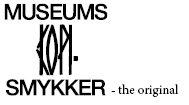___________________________________________________
In the spring of 1831, the inroads effected by the sea undermined and carried away a considerable portion of a sand bank in the parish of Uig, Isle of Lewis, and uncovered a small subterranean stone building like an oven, at some depth below the surface. The exposure of this singular structure having excited the curiosity, or more probably the cupidity, of a peasant who chanced to be working in the neighborhood, he proceeded to break into it, when he was astonished to see what he concluded to be an assemblage of elves or gnomes upon whose mysteries he had unconsciously intruded. The superstitious Highlander flung down his spade, and fled home in dismay; but incited by the bolder curiosity of his wife he was at length induced to return to the spot, and bring away with him the singular little ivory figures, which had not unnaturally appeared to him the pigmy sprites of Celtic folk-lore.
This is how Daniel Wilson accounts for the discovery of the ivory carvings in 1831 on the deserted Atlantic coastline of the Isle of Lewis in his book `The Archaeology and Prehistoric Annals of Scotland ´, Edinburgh 1851. However, there are many different readings of how they actually came to see the light of day. `The Royal Commission on Historical Monuments for Scotland ´ even supports the theory of `a cow rubbing itself against a sand hill ´, whereby the pieces were exposed.
By comparing the various versions, one may suggest that an unusually high tide began the work by exposing, or virtually exposing them in the remains of a sand dune or in a dry-stone structure, which had been under the sand dune, and then, by accident, the chess pieces were discovered by a local in pursuit of a stray cow.
Ninety-three pieces are known today. One belt buckle, 14 plain draughts men, and 67 chessmen, all of which have been in the British Museum since 1831, and another 11 chessmen that are kept in the National Museum of Antiquities of Scotland since 1888. The first actual record that dates back to 1832 concerned the pieces from the British Museum, and states under which circumstances the 67 chessmen, carved in the 8th century from the teeth of the Walrus, were bought for only £84.
The game Chess itself was invented in India in the 5th and 6th century and was called Chaturanga. Also then, chess was a very sophisticated game and initially symbolized a battle between two Indian armies, each governed by a king, aided by his general or minister, and consisting of two elephants, two horsemen, two chariots and eight footsoldiers, and the moves that these pieces were allowed to make on the board symbolized the different degrees of maneuverability of the four divisions.
From India the game spread far, due to its own excellence and the travels of players, where the rules, the looks of the pieces and their names often were changed.
By 600 AD , through Persia and the North of Africa, chess came to Spain and hereby also to the Christian West. In England, in 1010 AD, one of the first European references to the game is found and during the following years chess develops into `The Lewis Chessmen ´ we know today. In England the King remained `kyng´, the General and the Ministers was `quene´ or `fere´ , the Elephants were `alfin´ , the Horsemen were `knyght´, the Chariots were `roc´, and the Footsoldiers were `poun´. The word chess comes from the Arabic Shãh or King, and checkmate from the Shãh mât, `the king is without resource ´.
The pieces in this game are miniature reproductions of `The Lewis Chessmen´, created by our own people. They are made in Silver/Bronze and Gold/Silver.
Ref.: The Lewis Chessmen, British Museum Publications Limited.
___________________________________________________
Specifikationer:Metallegering:
Højde :
| Vælg herunder
17,0 mm |
___________________________________________________

